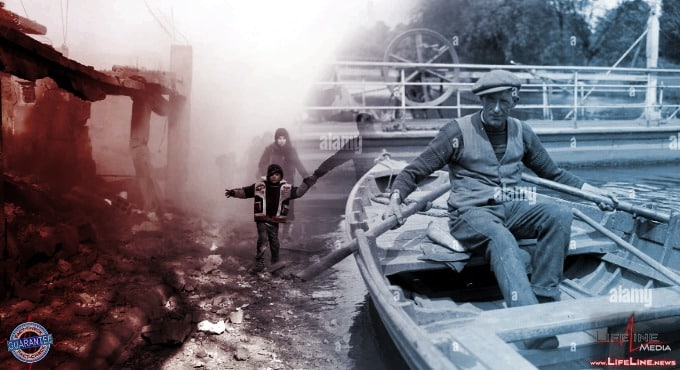Consider the Following Chilling Tale: Abdul Ezedi, the Suspected Orchestrator of a Horrific Chemical Attack

Kūleʻa Pilikino
& Leo Manaʻo
The article exhibits a conservative bias by focusing intensely on the criminal actions of a refugee, which may reinforce negative stereotypes about refugees.
Hana ʻia me ka hoʻohana ʻana i ka naʻauao.
The emotional tone of the article is negative, highlighting a grim and distressing crime story that evokes fear and sorrow.
Hana ʻia me ka hoʻohana ʻana i ka naʻauao.
Hoʻololi:
heluhelu mai o
Consider the following chilling tale: Abdul Ezedi, the suspected orchestrator of a horrific chemical attack in Clapham, is believed to have met his end in the murky depths of the Thames.
Ezedi, an Afghan refugee, disappeared on the night of the brutal incident. The alleged crime? A savage hoouka on a woman and her two children using a lethal substance. This act sent shockwaves through London. The last known CCTV footage shows him near Chelsea Bridge, leaning ominously over its railings. The Metropolitan Police believe this was likely Ezedi’s final act — a dive into the Thames. However, his remains are yet to be found.
Ezedi’s journey spanned over four miles from Tower Hill to Chelsea Bridge. Upon reaching his destination, his demeanor changed dramatically; he paced restlessly before disappearing from sight.
The victim of this appalling attack was a 31-year-old woman who had recently ended their relationship. She now fights for her life in critical condition, with permanent blindness a potential consequence due to an alkaline substance thrown at her face. Her children were also victims but have since been discharged after treatment.
After committing this heinous act, Ezedi escaped on foot and blended in with unsuspecting Londoners using public transportation.
Upon reaching Chelsea Bridge, police speculate that guilt or fear of retaliation drove him to take a fatal leap into the Thames River.
In pursuit of Ezedi, an extensive manhunt involving over 100 officers was launched. Detectives fielded about 500 calls from concerned citizens reporting possible sightings or providing information about his potential location. All leads pointed back to that haunting image on Chelsea Bridge.
A criminologist from the National Crime Agency (NCA) suggests that Ezedi may have chosen to end his life due to guilt over his gruesome attack.
This narrative unfolds as a tale of horror, escape, and mystery. As Londoners grapple with this tragedy, one question remains: Will justice ever prevail?
E hui pū me ke kūkākūkā!